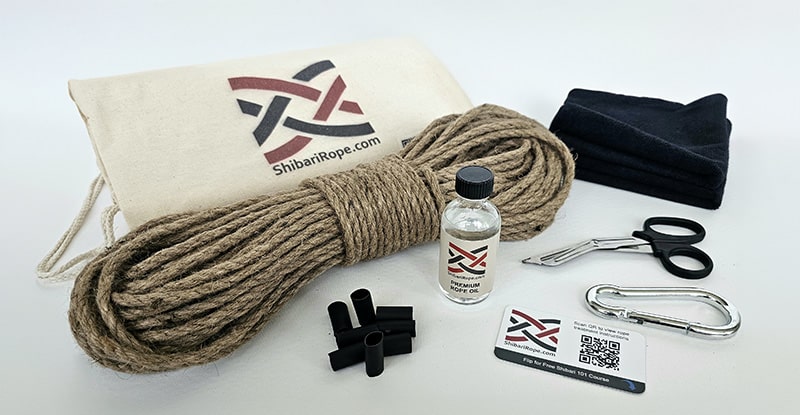Which Rope is Best for Shibari?

When it comes to shibari, the type of rope you use matters greatly. But which rope is best for shibari? There is no definitive answer, as the ideal rope depends on various factors like materials, construction, and personal preferences. This comprehensive guide will help you navigate the different options to find the rope best suited for your shibari practice.
- Introduction to Rope Materials
- Natural Fiber vs Synthetic Ropes
- Rope Construction and Sizes
- Factors to Consider When Choosing Shibari Rope
- Top Rope Recommendations for Shibari
Introduction to Rope Materials
The most common rope materials used for shibari fall into two main categories: natural fibers and synthetic fibers. Each has its own pros and cons.
Natural Fiber Ropes:
- Hemp
- Jute
- Cotton
- Bamboo/Rayon
- Linen
Synthetic Ropes:
- Nylon
- Polypropylene (MFP)
- Polyester
- Synthetic “natural fiber” like Hempex/POSH
Natural Fiber vs Synthetic Ropes
Natural fiber ropes like hemp, jute, and cotton are popular for shibari due to their excellent grip, easy handling, and reduced risk of rope burn. However, they are generally weaker and less durable than synthetic ropes. Hemp, in particular, is a shibari favorite for its aesthetics and “livelihood” but requires special care.
Synthetic ropes, such as nylon and MFP, offer superior strength and durability but can be slippery, stiff, and more likely to cause rope burn. They also don’t hold frictions as well as natural fiber ropes.
Rope Construction and Sizes
Bondage ropes are typically twisted or braided in construction. Twisted ropes are made of three strands twisted together, while braided ropes often have a solid core that some remove for better pliability.
The most common diameters for shibari range from 5mm to 8mm, with 6mm being the most popular. Thinner ropes are more flexible but can bite into the skin, while thicker ropes are stronger and more comfortable but form bulkier knots.
Rope lengths usually range from 7 to 8 meters (23 to 26 feet), but custom lengths are also available.
Factors to Consider When Choosing Shibari Rope
When selecting the best rope for your shibari practice, consider the following factors:
- Strength: Is the rope’s strength important for your intended use (e.g., suspension)?
- Grip: Do you prefer a rope with excellent grip for holding frictions, or one that’s easier to untie?
- Handling: How does the rope feel in your hands? Light, heavy, supple, or stiff?
- Feel: How does the rope feel against the skin? Some prefer soft and comfortable, while others enjoy a rougher bite.
- Allergies: Are you or your partner allergic to any of the rope materials?
- Aesthetics: Do you have a preference for how the rope looks, especially for photoshoots?
- Price: Natural fiber ropes tend to be more expensive than synthetic options.
Top Rope Recommendations for Shibari
Based on the references and factors discussed, here are some top recommendations for shibari ropes:
- Hemp Rope: Soft yet strong, with excellent grip. Easier to care for than jute but more expensive. That said, if you buy raw hemp rope and treat it yourself, the cost of your rope kit will decrease substantially. Check out shibarirope.com for a complete guide on how to treat your hemp ropes and get your own DIY Shibari Hemp Rope Kit.

- Jute Rope: A shibari favorite known for its aesthetics, grip, and “lively” feel. Tossa jute is a popular tight-lay variety.
- Cotton Rope: An inexpensive and versatile option, though not as strong as hemp or jute.
- Bamboo/Rayon Rope: Incredibly soft and sensual, but not ideal for suspension due to stretch.
- Polypropylene (MFP): A strong and inexpensive synthetic option, though it can be stiff and slippery.
Ultimately, the best rope for shibari will depend on your specific needs, preferences, and intended use. It’s recommended to try out different options and consult with experienced riggers to make an informed decision.
